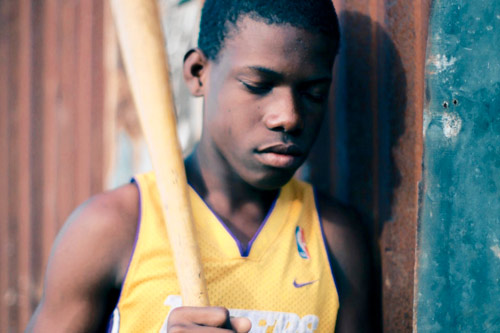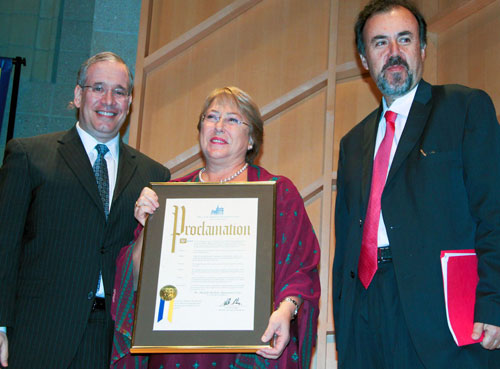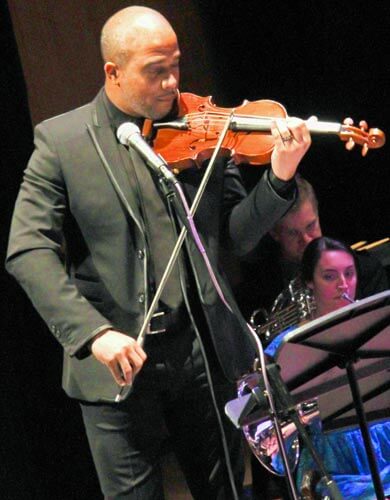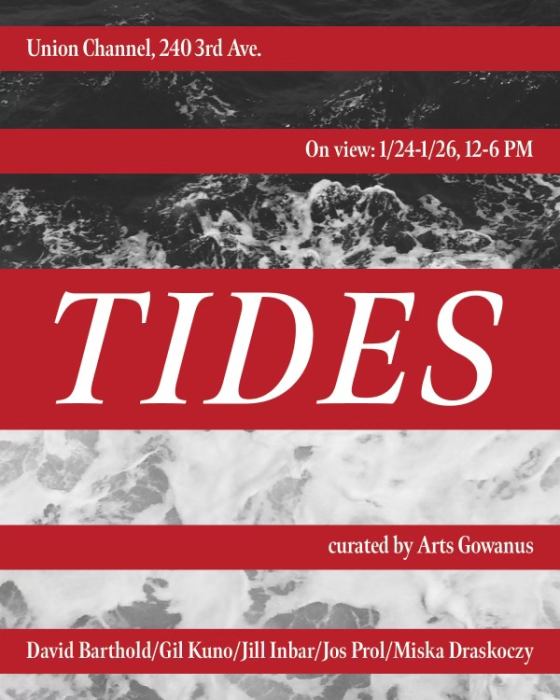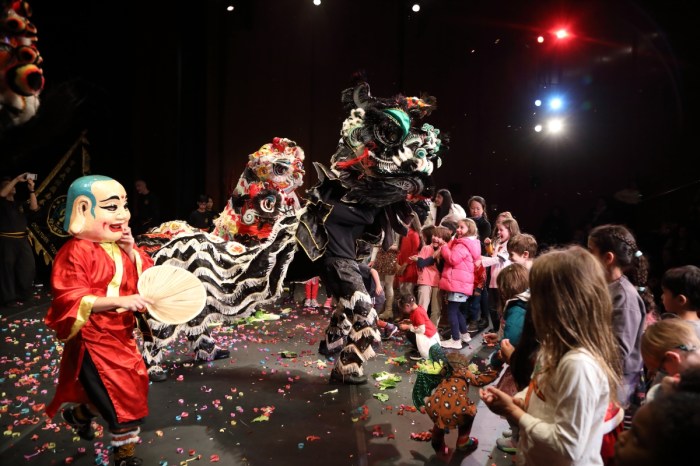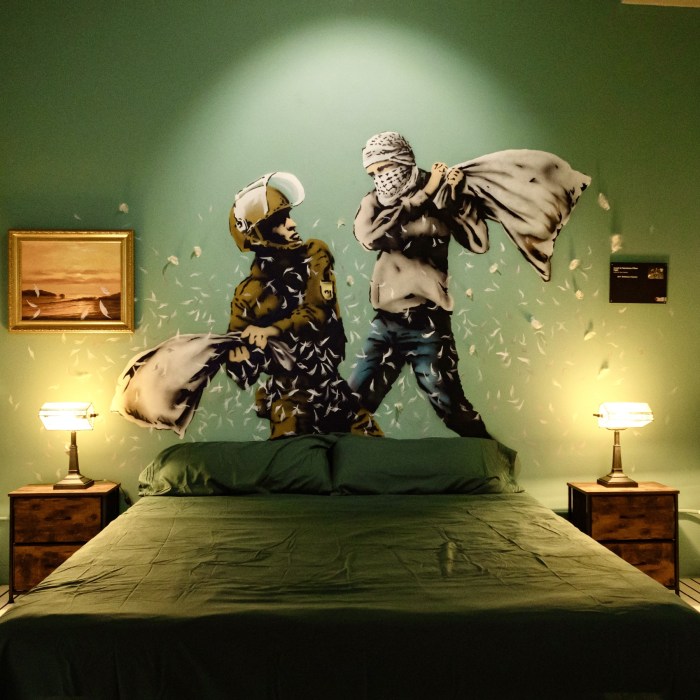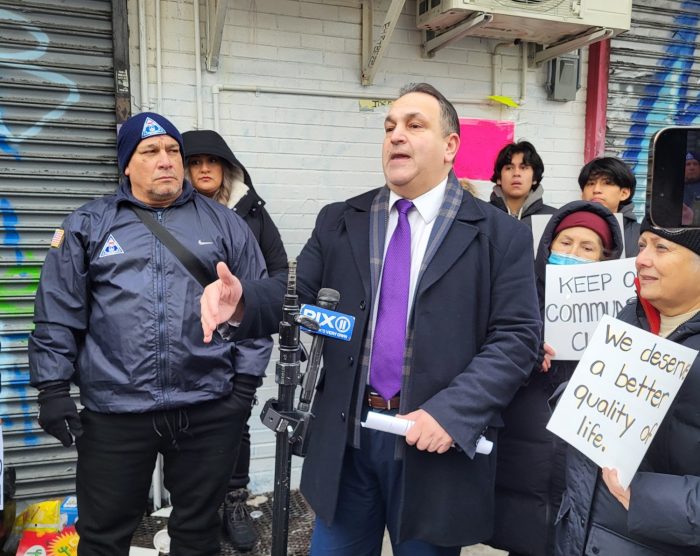There are many different vocabularies when it comes to the arts. Violinist, composer, musical artist Daniel Bernard Roumain (DBR) incorporates varied expressive techniques, a complex mélange of vocabularies, in his multi-multi genre latest work of musical art, “Symphony for the Dance Floor.”
Performed last weekend at BAM Harvey Theater, it is the last work of a three-part “Next Wave” series commissioned by the Brooklyn Academy of Music (BAM) – “One Loss Plus” (2007) and Darwin’s “Meditation for The People of Lincoln” (2008). This theater’s open spacious performance area is the home environment for Roumain’s ideas.
Ensconced on an upper left level of the stage area, MC/DJ Lord Jamar, worked his domain. Following the Friday, Oct. 14 performance, in an artist talkback, he summed it up, “This is a symphony for the 21st century.”
The BAMbilll program states that the piece follows traditional symphonic form. However, for those like myself, unfamiliar with symphonic structure, experiencing the artistry – music, movement and visual,–the mixture of genres stands on its own.
Light design, another of the collaborative art forms of this piece, opens the work. Supersized in silhouette, violinist Roumain performs behind a screen. Next, he appears as a lone figure in the vast performance space. From the beginning, it is clear; you’re in for something different.
The artist talkback was very helpful in understanding specifics of the different 11 numbers– CD available at BAM. Roumain collaborated with a creative team, so that dance, song, including his foray into singing and dance, piano, DJing, rap, and lighting design weave their way into this creative fabric.
There is folk sounding music (For You), piano and sung by Cynthia Hopkins and a pas-de-deux ballet with dancer and choreographer Millicent Johnnie and Roumain doing movement while playing violin. “I won’t ask anyone to do anything I won’t do myself,” is how Roumain explains his entre into singing and dancing, yet, “everything begins and ends with the violin,” of which he is master; the violin is his core. Reverb echo and plucking are also part of his technique.
In this multi-genre packed symphony, DJ Lord Jamar raps a narrative. Symphonic music accompanies hip-hop and break dancing. Costumed in black leather, there’s a sexy ballet.
Framing the performance, are two rows of seats on both sides literally on the stage; the audience is brought close to the essence. At times, Roumain is atop, playing directly to individuals in those fronting rows.
In dance, the influences are African, African-American and Afro-Caribbean, Yoruba, Samba, Yavaloo, hip-hop, and even basketball. Foot-tapping and spoons-playing are incorporated in the piece that harks to country music.
Video and photography projection are also utilized.
The Symphony is the mixing of elements, culture, sound, visual, movement and energy that usually aren’t paired together; soul is the glue.
Occasionally DJ Lord Jamar adds a sentence in his rap of explanation, like a punctuation mark. In Inseparable, he comments, “This is a true story.”
When the eponymous dance number begins, he let us know, “This is Symphony for the Dance Floor,” the whole work’s signature name. This piece was so filled with rhythm and feeling that I was hoping the audience would be invited to join with the dancers. At the CD signing, DJ Lord Jamar said, “You could have come up to dance; in Miami they did.“ I thought that a Brooklyn audience needs an invitation; at least, I did.
This commission changed concept and direction after the January 2010 earthquake in Haiti for Roumain who is Haitian-American, though there are no obvious, direct references. “My father told me there would be no self-pity…. he predicted there would be dancing and singing in the streets.” For Roumain’s homage, he celebrates life.
Following the Brooklyn performances, “Symphony for the Dance Floor” was performed in Albany and Cleveland.



